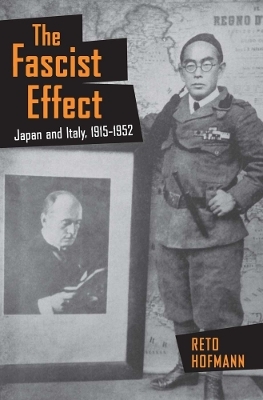
The Fascist Effect
Japan and Italy, 1915–1952
Seiten
2015
Cornell University Press (Verlag)
978-0-8014-5341-0 (ISBN)
Cornell University Press (Verlag)
978-0-8014-5341-0 (ISBN)
Reto Hofmann uncovers the ideological links between the fascist governments and cultures of Japan and Italy, shedding light on the formation of fascism's global...
In The Fascist Effect, Reto Hofmann uncovers the ideological links that tied Japan to Italy, drawing on extensive materials from Japanese and Italian archives to shed light on the formation of fascist history and practice in Japan and beyond. Moving between personal experiences, diplomatic and cultural relations, and geopolitical considerations, Hofmann shows that interwar Japan found in fascism a resource to develop a new order at a time of capitalist crisis.
Hofmann demonstrates that fascism in Japan was neither a European import nor a domestic product; it was, rather, the result of a complex process of global transmission and reformulation. Far from being a vague term, as postwar historiography has so often claimed, for Japanese of all backgrounds who came of age from the 1920s to the 1940s, fascism conjured up a set of concrete associations, including nationalism, leadership, economics, and a drive toward empire and a new world order.
In The Fascist Effect, Reto Hofmann uncovers the ideological links that tied Japan to Italy, drawing on extensive materials from Japanese and Italian archives to shed light on the formation of fascist history and practice in Japan and beyond. Moving between personal experiences, diplomatic and cultural relations, and geopolitical considerations, Hofmann shows that interwar Japan found in fascism a resource to develop a new order at a time of capitalist crisis.
Hofmann demonstrates that fascism in Japan was neither a European import nor a domestic product; it was, rather, the result of a complex process of global transmission and reformulation. Far from being a vague term, as postwar historiography has so often claimed, for Japanese of all backgrounds who came of age from the 1920s to the 1940s, fascism conjured up a set of concrete associations, including nationalism, leadership, economics, and a drive toward empire and a new world order.
Reto Hofmann is Lecturer in Modern History at Monash University.
Introduction1. Mediator of Fascism: Shimoi Harukichi, 1915–19282. The Mussolini Boom, 1928–19313. The Clash of Fascisms, 1931–19374. Imperial Convergence: The Italo- Ethiopian War and Japa nese World- Order Thinking, 1935–19365. Fascism in World History, 1937–1943Epilogue: Fascism after the New World Order, 1943–1952Notes
Bibliography
Index
| Reihe/Serie | Studies of the Weatherhead East Asian Institute, Columbia University |
|---|---|
| Zusatzinfo | 21 Halftones, black and white |
| Verlagsort | Ithaca |
| Sprache | englisch |
| Maße | 155 x 235 mm |
| Gewicht | 454 g |
| Themenwelt | Geschichte ► Allgemeine Geschichte ► Neuzeit (bis 1918) |
| Geisteswissenschaften ► Geschichte ► Regional- / Ländergeschichte | |
| Sozialwissenschaften ► Politik / Verwaltung ► Politische Systeme | |
| ISBN-10 | 0-8014-5341-0 / 0801453410 |
| ISBN-13 | 978-0-8014-5341-0 / 9780801453410 |
| Zustand | Neuware |
| Haben Sie eine Frage zum Produkt? |
Mehr entdecken
aus dem Bereich
aus dem Bereich
Europa 1848/49 und der Kampf für eine neue Welt
Buch | Hardcover (2023)
DVA (Verlag)
48,00 €
Giordano Bruno - ein ketzerisches Leben
Buch | Hardcover (2024)
C.H.Beck (Verlag)
29,90 €


